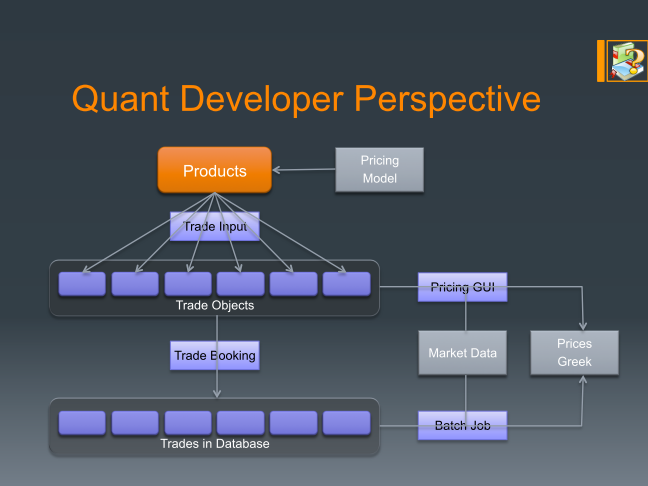We started this long series with a pitch for my book, Principles of Quantitative Development. This series, and the associated eBook, is an expanded version of the non-technical introductory chapters of the book — what are the things we need to keep in mind while designing a trading platform? Why is it important to know the big picture of finance and banking? Hopefully, these posts have given you a taste of it here. If you would keep a copy of the series handy, you can purchase and download the beautifully crafted eBook version.

We went through the structure of the bank from the exotic and structured trading perspective. We talked about the various offices (Front Office, Middle Office and Back Office) and pointed out the career opportunities for quantitative professionals within. The organizational structure of the bank is the apparatus that processes the dynamic lifecycle of trades.
If the structure of the bank is akin to the spatial organization, the lifecycle of the trade is the temporal variation; their relation is like that of the rails and the trains. We spent quite a bit of time on the flow of the trades between the front office and middle office teams, how the trades get approved, processed, monitored, settled and managed. Each of these teams has their own perspective or work paradigm that helps them carry out their tasks efficiently.
Trade Perspectives was the last major topic we touched upon. As we saw, these perspectives are based on the way the various teams of the bank perform their tasks. They form the backdrop of the jargon, and are important if we are to develop a big-picture understanding of the way a bank works. Most quants, especially at junior levels, despise the big picture. They think of it as a distraction from their real work of marrying stochastic calculus to C++. But to a trader, the best model in the world is worthless unless it can be deployed. When we change our narrow, albeit effective, focus on the work at hand to an understanding of our role and value in the organization, we will see the possible points of failure of the systems and processes as well as the opportunities to make a difference. We will then be better placed to take our careers to its full potential.











